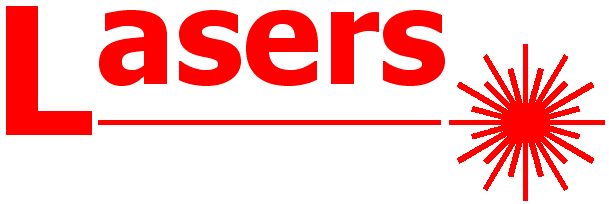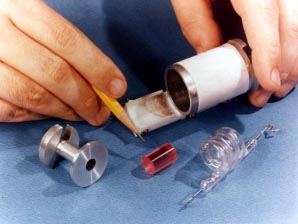Understanding how atoms absorb and emit energy is crucial to understanding how lasers work. An atom with no external forces acting upon it is said to be at its ground state. When energy is applied in the form of heat, light, or electricity, electrons move up one orbital and the atom is considered excited. An atom wants to exist at its ground state, so excited atoms will lower the electrons back down one orbital, and in the process, release a photon.
When a photon released by an atom from a specific energy state passes by an excited atom of the same type and energy state, it can stimulate the other atom to reduce its energy state and give off a photon. This resultant photon will be in the same direction, wavelength (color), and phase. This phenomenon is called stimulated emission.
The energy source of the laser serves to excite the atoms of the lasing medium by two steps, to level three. The energy level is unstable so it quickly decays to the third level. The decay from the second level to the ground state sends photons in every direction. The photons sent to the side of the rod are lost, but the photons sent to the mirrored ends of the rod are reflected and bounced back and forth along the length of the tube, stimulating the emission of photons along the way. Very quickly, a large amount of photons are in motion up and down the rod, and the half-silvered mirror let out some of the photons, creating laser light.
Graphical representation of stimulated emission




